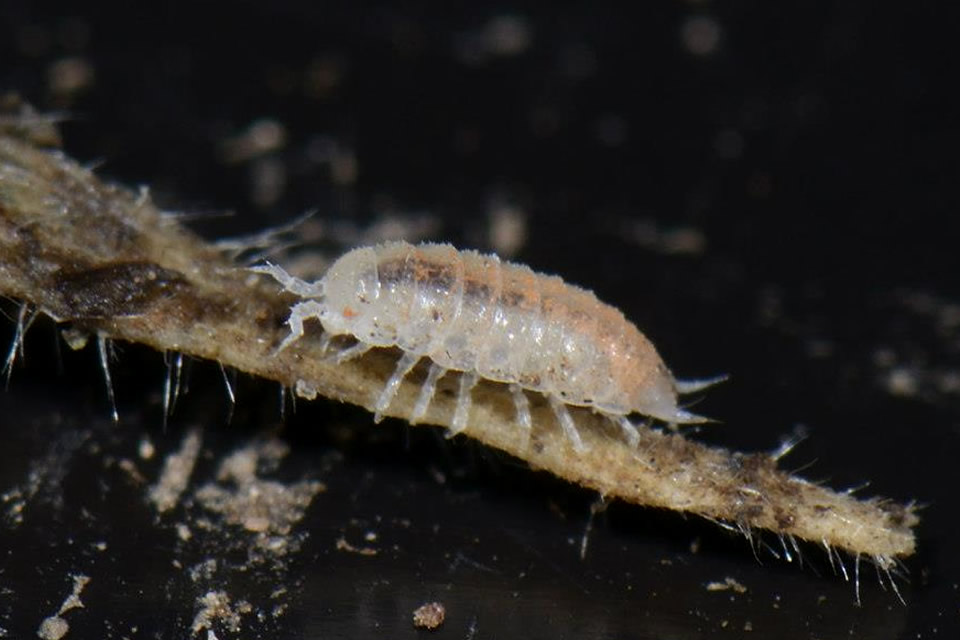Trichoniscoides saeroeensis Lohmander, 1924
Common name
Status:
GB IUCN status: Least Concern
ID Difficulty
Identification
The pygmy woodlice of family Trichoniscidae (and Styloniscidae) are readily distinguished from other woodlice by the shape of the antennal fagellum which comprises a tapered cone (of indistinct segments) bearing a terminal bristle.
Trichoniscoides is a difficult genus and only male specimens of Trichoniscoides saeroeensis (a predominantly coastal species) can be reliably distinguished from T. helveticus or T. sarsi (the latter has also been recorded from coastal habitats). All three are small (to 4 mm) creamy-white woodlice flushed with varying amounts of orange with the dorsal surface covered with weak tubercles. In T. saeroeensis the eye is composed of a single pinkish-orange ommatidium (typically dark red in T. helveticus and T. sarsi).
All eye and body pigments are rapidly lost in alcohol, thus making preserved specimens difficult to separate from Metatrichoniscoides celticus or M. leydigii.
Identification should be confirmed by microscopic examination of the male 2nd endopod, which is slender, elongated and tapers to a fine point (which can be seen without dissection).
Distribution
Although widely distributed around the entire coastline of Britain and Ireland, Trichoniscoides saeroeensis is not confined to coastal habitats. It has been recorded up to 12 km inland deep inside limestone caves and mines, and on the summits of limestone mountains.
Habitat
It is typically found in the supralittoral zone associated with coastal erosion banks, sparsely vegetated shingle or salt marsh strandline. Here it tends to occur several centimetres below the surface, where damp peaty soil occurs. It is most easily collected by turning large partly embedded stones, but also on the tap roots of sea-shore plants. It is often found with Haplophthalmus mengii.
At inland mountain summits it is found under stones and rocks partly embedded in peaty soil and inside mines it is often found within waterlogged timbers.
This summary is based on the detailed account in Gregory (2009).
References
Gregory, S. (2009) Woodlice and Waterlice (Isopoda: Oniscidea & Asellota) in Britain and Ireland. Field Studies Council/Centre for Ecology & Hydrology.
Links
World List of Marine, Freshwater and Terrestrial Isopod Crustaceans: https://www.marinespecies.org/isopoda/aphia.php?p=taxdetails&id=263648









